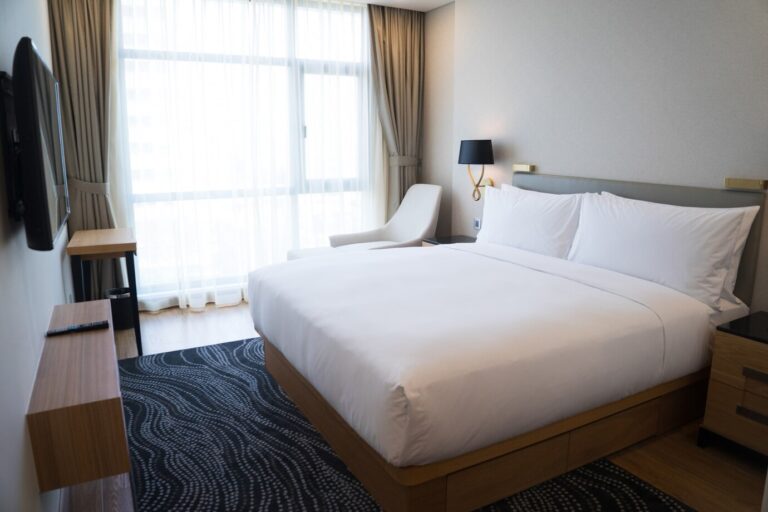A good mattress can be made from natural or synthetic materials or a blend of the two types. If you prefer cotton, wool, silk, or latex, look for manufacturers that produce natural and synthetic mattresses. The materials in a mattress have distinctions and features that suit different lifestyles, needs, and preferences. Here’s more information about natural and synthetic bed materials and how to choose between them:
Natural Materials
Eco-friendly and renewable resources, such as organic cotton, natural latex, wool, and bamboo, are used in natural mattresses and modern brands. Natural materials are biodegradable and are produced using fewer harsh chemicals. They’re also hypo-allergenic and resistant to dust mites, mold, and other allergens. Materials like wool and natural latex offer better breathability, moisture control, temperature regulation, and body support. These features keep you cool and comfortable throughout the night.
Natural materials are durable and are used in high-end brands with lengthy warranties. The materials may be soft or firm, depending on their concentration within the mattress. Manufacturers offer beds with different qualities to fit unique needs, preferences, and budgets. You can find a mattress with a combination of natural materials, such as interior layers of wool and cotton and latex on exterior sides. Luxury mattress designs feature natural materials like cashmere, camel hair, white hair, and more. Resources such as cotton and sheep wool should be grown and raised using natural and organic nutrients.
Synthetic Materials
Artificial or synthetic materials include memory foam, polyurethane, and synthetic latex. The materials are more affordable to produce, which results in budget-friendly bed options. Synthetic foams are comfortable and conform to your body’s contours during sleep. These materials come in varying levels of firmness, thickness, and construction. You can customize your mattress to meet your comfort preferences and needs, such as pressure relief and musculoskeletal support. Materials that conform to your body contour can reduce pressure on your joints as you sleep, resulting in better rest.
Advancements in production technologies allow manufacturers to create safe, durable mattress designs using high-quality synthetic materials. Look for products without chemicals, fire retardants, or foams to protect your body from exposure to harmful elements. Synthetic bed materials retain more body heat, which makes them suitable for customers who live in cold regions or get cold during sleep. The materials may also have moisture-wicking and hypo-allergenic qualities.
Choose a High-Quality Mattress
Choosing the right mattress for you involves a decision between synthetic and natural materials. This decision depends on personal preferences and wellness priorities. If you want a luxurious bed, choose natural silkworm silk, cotton, or wool materials. Natural products are suitable if you prioritize hypo-allergenic properties and sustainability. If you want to prioritize your safety, look for mattress materials like wool and cotton that have high moisture absorbency and conduct less heat, resulting in natural fire resistance.
Synthetic materials offer comfortable, economic, and durable mattress solutions. Synthetic options are ideal when looking for a mattress on a budget. They offer a wider variety of comfort options, and you can find designs with individually wrapped honeycomb pocket coils, adjustable chambers, and other support systems. Natural materials allow for more unique mattress construction processes, such as hand tufting, which requires an artisan to sew every tuft. High-quality production techniques may make natural mattresses more comfortable, healthy, durable, and safe.
Find Premium Mattresses Today
Choosing the right mattress involves identifying your comfort needs, material preferences, and spending goals. You can compare different natural and synthetic bed materials to determine which types are right for you. Visit an online or in-person mattress showroom today to learn more about natural and synthetic beds.

